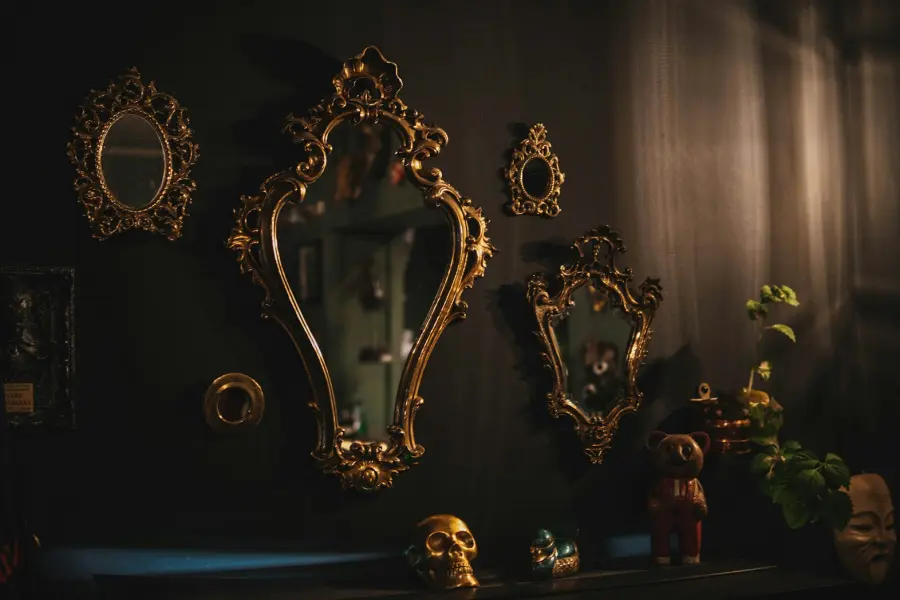Across cultures worldwide, myths and superstitions intertwine deeply with daily life. While some traditions hold wisdom and cultural significance, others mislead us from truth and reason. This story examines the consequences when unfounded beliefs embed themselves in our hearts and minds, and the cost of abandoning critical thinking.
Dr. Sarah Chen had always prided herself on being a woman of science. A psychology professor at a university, she dedicated years to studying human behavior, debunking myths, and teaching critical thinking. But everything changed when her grandmother passed away, bequeathing her an ornate antique mirror.
The mirror was exquisite—its silver frame intricately carved with symbols Sarah didn’t recognize. Alongside it came a handwritten note from her grandmother: "This mirror reveals the truth of one’s soul, but only at the stroke of midnight. Look into it then, and you will see your future."
Initially, Sarah dismissed this as harmless folklore. She hung the mirror in her study, appreciating its aesthetic more than any alleged power. Yet, as weeks passed, curiosity gnawed at her. Her grandmother had been wise; what if there was something to it?
The first midnight glance revealed nothing unusual—only her tired reflection. She noticed, however, that she appeared more haggard than usual. Must be the lighting, she reasoned.
The second night, shadows seemed to flicker behind her reflection. By the third, she was certain she glimpsed a figure in white standing in the corner. On the fourth, she became convinced the mirror showed visions of future—or perhaps past events.
Sarah soon structured her life around these nightly encounters. Canceling evening plans, skipping important events, postponing grading papers—anything to be home by midnight. The “visions” grew elaborate: scenes of great achievements, devastating failures, and mysterious figures warning her of dangers.
When invited to present at an esteemed international conference, Sarah almost declined. The mirror had forewarned her that travel would bring misfortune. Only her department head’s intervention dissuaded her.
At the conference, she met Dr. James Winters, a renowned cognitive psychologist specializing in superstition. In casual conversation, Sarah confessed her belief in the mirror’s powers.
Dr. Winters listened patiently before asking, "Have you considered that your experiences may be pareidolia—the mind’s tendency to find meaningful patterns in random stimuli, especially when tired or stressed?"
He explained how the fatigued brain at midnight is prone to illusions, shaped by expectations. "If you anticipate visions, your mind creates them," he said gently.
A chill of realization washed over Sarah. She had taught these concepts herself—confirmation bias, pattern recognition, suggestion. How had she forgotten?
That night, instead of rushing back to the mirror, she stayed at the reception, engaging colleagues and sharing genuine research. She recalled why she became a scientist.
Returning home, Sarah conducted an experiment: covering the mirror for a week, then looking at midnight without expectation. She saw exactly what was there—her reflection, nothing more.
The shadows and figures had been her tired mind’s illusions, fueled by suggestion and dim lighting. The "prophecies" were vague enough that her mind fitted random events with meaning—a textbook case of subjective validation.
Sarah realized how close she’d come to jeopardizing her career, relationships, and mental health over baseless beliefs existing only in her imagination.
Closing
The mirror now hangs in Sarah’s university office—not as a mystical artifact, but as a teaching tool and a personal reminder. Above it is a plaque reading: "Critical thinking is not the enemy of wonder—it is wonder’s greatest protector."
Sarah uses her experience to educate students on scientific thinking, confirmation bias dangers, and how even educated individuals can succumb to unfounded beliefs when forsaking reason for wishful thinking.
She learned the most dangerous myths are not those openly rejected, but those secretly hoped true. Our yearning for meaning, control, or glimpses into the unknown can blind us to reality.
The true magic, Sarah discovered, lies not in supernatural visions, but in human capacity for learning, growth, and courage to admit mistakes.




